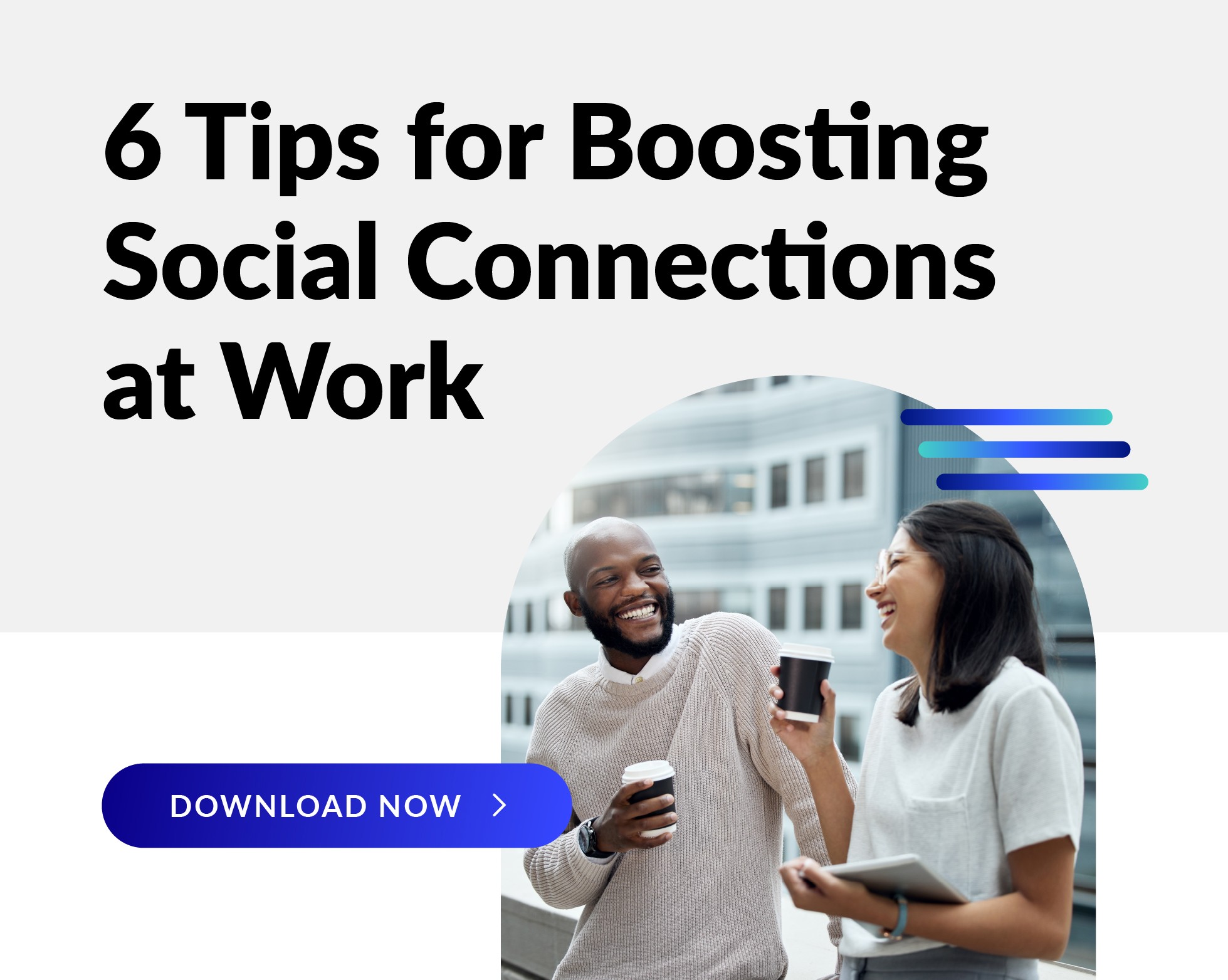 Caring for the health and well-being of employees goes beyond just the physical aspects. The most effective well-being programs address multiple aspects of employee health—physical, emotional, social, clinical, and financial. Supporting health and well-being programs in the workplace is particularly important now as the pandemic continues to impact so many areas of our lives. Read on for our thoughts on why a holistic focus on many types of wellness is most effective.
Caring for the health and well-being of employees goes beyond just the physical aspects. The most effective well-being programs address multiple aspects of employee health—physical, emotional, social, clinical, and financial. Supporting health and well-being programs in the workplace is particularly important now as the pandemic continues to impact so many areas of our lives. Read on for our thoughts on why a holistic focus on many types of wellness is most effective.
With well-being, it’s all connected.
If there’s one thing we know after helping thousands of participants make lasting improvements to their overall health, it’s that the dimensions of well-being are all connected. Influencing one means taking a hard look at all of them. And when we do focus on one health objective, we’re likely to see benefits in additional areas.
Consider someone looking to lose weight. A one-dimensional approach might focus primarily on healthy eating and exercise. But that approach doesn’t consider the other aspects of a person’s life that may make it difficult to achieve weight loss goals.
For example, maybe they’re part of the “sandwich generation” with lots of caregiving responsibilities that leave little time to cook a healthy meal. Perhaps unrelenting work demands are causing them to stress-eat. Maybe they’re not getting enough sleep, which is scientifically proven to make us hungrier. Or, like so many people these days, they could be experiencing financial stress.
A well-being program that is truly holistic approaches health from all different aspects.
What are the significant areas of wellness employers should focus on?
Ultimately, employers who want happy, healthy and productive employees that stay with them long-term should support all areas of well-being. Here are some significant areas of wellness you can focus on, and how they may positively impact employees in other ways, too:
Emotional balance.
A recent report by Gallup finds that employees are more stressed than ever—even more so than at the beginning of the pandemic—and it’s leading to burnout. According to the American Psychological Association’s 2021 Work and Well-being Survey, nearly 3 in 5 employees reported classic symptoms of burnout, including lack of interest, motivation, or energy (26%) and lack of effort at work (19%). A well-being program that provides free counseling through an Employee Assistance Program (EAP); access to mindfulness, stress management, and resilience tools; and support through text/chat mental health apps can help. And, if mental health improves, participants may be better able to engage in other healthy behaviors, like getting more restful sleep and finding more opportunities for movement throughout the day.
Read more about ways to improve mental health in the workplace here.
Physical health.
An increase in physical health—both from an exercise and nutrition standpoint—has ripple effects across other dimensions of well-being. Going back to our weight loss example, we know that losing weight often triggers other health benefits, like better sleep, more energy, reduced depression and anxiety, and potential discontinued use of high blood pressure or diabetes prescriptions. So helping employees increase physical activity—at home and at work—and focusing on nutrition will pay dividends in other areas of health.
Read more about health coaching for employees here.
Clinical management.
In addition to the physical health challenges they experience, people with chronic conditions like cancer, heart disease, or diabetes may be more likely to have or develop a mental health condition.1 That’s why it’s so important to couple the clinical or condition management aspects of a well-being program with support for mental health. And again, when people are feeling better emotionally, they may be better able to do things like adhere to a medication protocol or even be open to other ways of treating their condition through diet and exercise.
Read more about supporting employees with chronic conditions here.
Social connections.
Loneliness and detachment from community life have been a problem in the U.S. for some time now. Layer on pandemic-related isolation, and you begin to realize why keeping up social connections is an increasingly important part of a well-being program. In addition to the fact that humans are naturally social creatures, social connection leads to increased happiness, better physical health, and even a longer life.2 That’s why employers must intentionally offer coworkers ways to engage with one another–in-person or even virtually. Wellness challenges are great ways to foster this type of connection.
Read more about the importance of staying connected here.
Financial security.
Financial stress and money worries can have a major impact on employees’ mental health, sleep, self-esteem, physical health, relationships, and productivity and attendance at work. So, the effects of offering financial wellness programs as part of a well-being strategy will be felt across many dimensions of health. And it may also have a significant impact on worker productivity, since financially stressed employees spend nearly three hours or more handling financial matters during the workday.
Read more about the importance of financial wellness here.
In today’s complicated world, the importance of wellness for your employees can’t be overlooked. The good news is that the benefits of well-being programs will not only be felt by the individual, but also by the business. After all, an employee who is healthier in mind and body is, quite simply, a more productive employee. For help ensuring that your well-being program is holistic, visit our website or contact us at connect@webmd.net.




